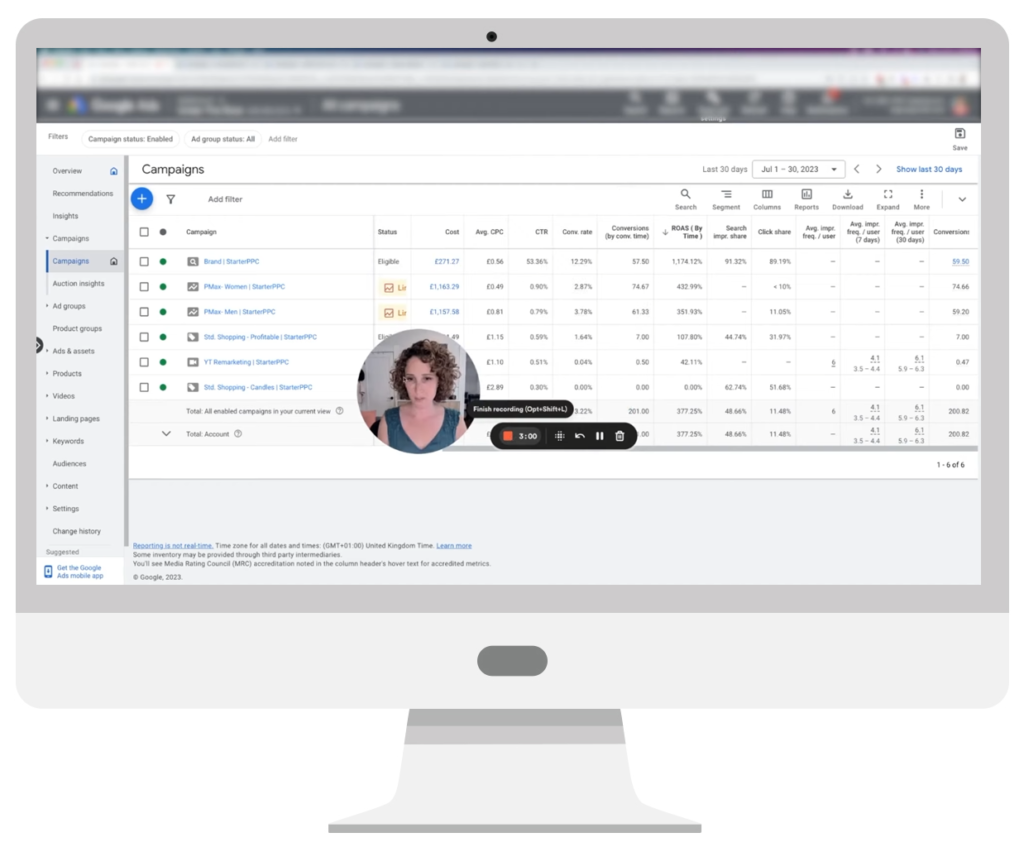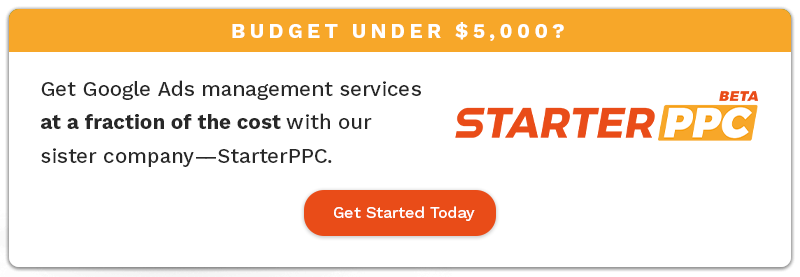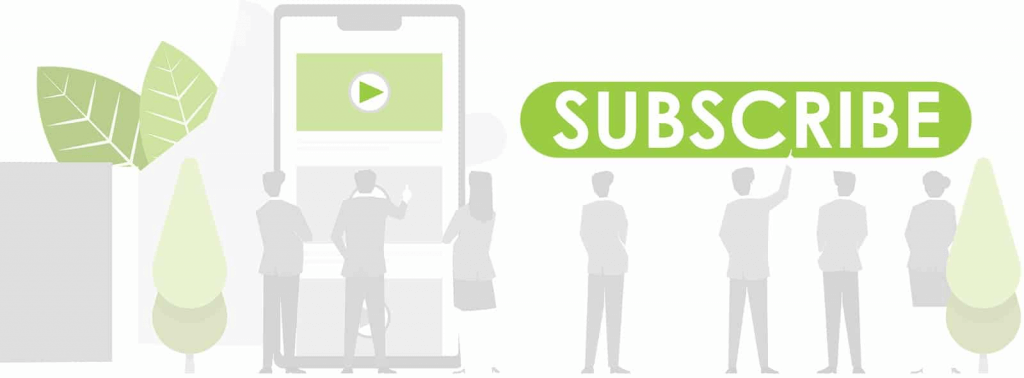Ah, the age-old debate…
Should you leave it up to Performance Max or launch a remarketing campaign? Or both?
Regina, who runs our sister company StarterPPC, recently laid out some really good points in this video to help you determine the right remarketing strategy for your business.
But first, a little background.
Regina explains that at StarterPPC, they typically work with small businesses with very limited ad budgets ($5K or less monthly). For this reason, they often don’t launch a full Performance Max campaign for their eCommerce clients.
“Unless they have a long history with a PMax campaign that’s already existing and already proving to perform, we’ll usually just start with a PMax feed only,” she explains.
This encourages PMax to work like a Smart Shopping campaign; it can follow people around the internet with product images and titles, but it doesn’t really have any other assets. Later on, once a large enough body of data has been collected, they may switch to a full Performance Max campaign.
(Side note: Every once in a blue moon, Google will create its own assets, but they try to restrict this in the beginning.)
So what do they do instead?
Regina says one of the first things they do when clients come to them is ask for videos. Why?
“Because videos are gold.” This is something she’s said time and again in previous videos, and it remains true. She and her team try to get as many videos as they can from clients, and usually they will have at least one or two, but more is better. In fact, around 20 videos is ideal.
And then, they set up a dedicated YouTube remarketing campaign—one for video and one for Display. Regina gives a quick example of this at the 3:00 mark in the video.

“This is oftentimes what we’ll do in the beginning,” Regina explains. “And you can see here it doesn’t use that much money so it’s totally worth setting up; it just needs like two dollars a day.”
She points out that these are warm users, so it’s relatively inexpensive to show them images and video of your product. And, you can always just remove them from the campaign when they convert. The audience size is also very small, since it just taps into users who have been to your site in the past however many months.
In contrast, if they are running a full PMax campaign with all the assets, it’s probably going to spend as much money as it possibly can on remarketing—because that’s just what PMax does, says Regina. “It brings in the ROAS.” So, it’s going to go after the warm traffic, and that warm traffic is the website visitors, which is important to keep in mind.
For those who do want to lean heavily into remarketing, Regina suggests setting up a full Performance Max campaign and giving it all of your lifestyle images and video assets. Then, in about six months or so when Google has gathered a large body of data and there’s a well-established campaign and clear enough patterns to identify who converts as well as how, when, and where, now you have a decision to make:
Are you going to keep running your dedicated remarketing campaigns or are you going to let PMax handle it from here?
As with many things Google Ads…
There is no right or wrong answer.
However, because it’s just two dollars a day, Regina often leans toward leaving the remarketing campaign on. That way, you have full control and can see how often everyone is seeing the videos—something she just doesn’t trust Performance Max to do correctly.
“PMax claims that it goes after cold audiences, although that hasn’t been our experience,” Regina says. “I also believe in the power of remarketing. Even though you often don’t see a high return on these campaigns I believe that they act like billboards. And even though it’s very hard to track how effective it is, you can play around with it to see if your overall media efficiency ratio (MER) goes down for your business.”
In a nutshell:
If your videos are good and you have a couple extra dollars in your daily ad budget, Regina recommends leaving the remarketing campaign running even though you might have a full PMax campaign also using those same assets that is competing with your video or display remarketing campaign.
Do you agree or disagree?
Regina admits that some folks won’t share her philosophy.
She says oftentimes when you start to work with bigger clients, especially eCommerce clients, what happens is that they’ll be running Facebook [Meta] Ads, and Facebook is really good at getting cheap clicks and sending a bunch of people to your site, so you have a large body of website visitors and the amount of traffic there goes up.
However, her fear in this case is that PMax would spend all of its money (or too much of its money) on remarketing, which is why she prefers to put a few dollars a day into a dedicated YouTube/Display remarketing campaign in the hopes that it competes with Performance Max and gobbles up some of that traffic. This frees up the PMax campaign to do what it does best—which is cold prospecting.
Still, some people prefer to see the ROAS.
So, for businesses with larger budgets (let’s say they’re spending $50K monthly), they might choose to simply turn off the YouTube remarketing campaign and lean into PMax, which makes sense.
Performance Max has a huge body of data to work with and, on average, does a better job with bigger budgets. (Although this is not always a hard rule of thumb, says Regina.)

Another thing to consider: How important is remarketing to your business?
Regina asks her clients how much money they want to dedicate to remarketing, and for this it’s important to think about the sales cycle.
“I try to think about how long the sales cycle is,” Regina explains, and illustrates a simple way to figure it out. If you pull up the Conversions column (not Conversions by time but just Conversions), and you go down to the Account row, you can hover over the number there and there’s a pop-up that shows up and says something like, “It takes up to three days after an impression for most of your conversion data to be reported.” Now you know your sales cycle in Google Ads on average is three days.
For some lead gen businesses, says Regina, remarketing can be even more important because oftentimes those businesses are selling services and not tangible products. For those types of businesses, the sales cycle tends to be weeks, if not months.
She then goes on to explain:
“For businesses that have a longer sales cycle, you might decide ‘Okay, remarketing for us in particular is very important because we have to educate people, we have to build their trust, so we’re going to really lean into that and we don’t mind if people see our videos 8, 9, 10 times on average per month and we have it in the PMax campaign.'”
The takeaway
At the end of the day, whether or not you choose to run remarketing campaigns and Performance Max campaigns simultaneously will depend on your business, your budget, your sales cycle, and other important factors.
Also consider how many videos you have, says Regina, because people will get exhausted by seeing the same two videos over and over. But if you have 20 really good videos? You could potentially boost your monthly views by a significant number. Just make sure if you’re running remarketing campaigns to cap the views, she follows up.
You can do this by going into Settings, under Additional settings, and under Frequency capping you can limit the number of times an ad is shown to the same user.
Author
Pamela is the Senior Content Writer at Solutions 8. When she's not writing, you can find her hiking in the woods with her dogs. She is currently on a quest to visit every national park in the United States.
 Pamela Sapio
Pamela Sapio












